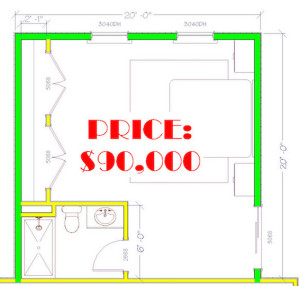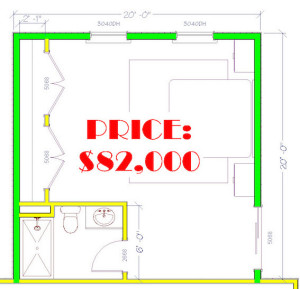In previous posts, Choosing a Contractor – The Screening Process, we’ve discussed some important factors in choosing a contracting company for your project. Today, I’d like to tackle a major step in the process: making sense of estimates.
 Most homeowners looking to embark on an addition or remodel project consider a couple of different companies before signing a contract. While more goes into it than simply cost alone, deciding which company to hire hinges more or less on their estimate – how much they will charge you to complete the work. The challenge lies in the fact that oftentimes, the estimates you receive may be miles apart in price and scope, causing you to wonder if everyone was talking about the same project. So, how can we make sense of this?
Most homeowners looking to embark on an addition or remodel project consider a couple of different companies before signing a contract. While more goes into it than simply cost alone, deciding which company to hire hinges more or less on their estimate – how much they will charge you to complete the work. The challenge lies in the fact that oftentimes, the estimates you receive may be miles apart in price and scope, causing you to wonder if everyone was talking about the same project. So, how can we make sense of this?
There are a few factors that result in a fluctuation in cost; things like overhead (office buildings and staff, vehicles, and maybe even season football tickets). Or it may be due to how much the craftsmen are paid or, more likely, how much money a company wants to earn from any given job. We’ll delve more deeply into these factors in a future post, but for today, I’m going to talk about another factor that causes massive swings in estimates: The Gray Area.
To explain the perils of The Gray Area, I’ll give you a classic example – one I see all the time. Two estimators from two different companies meet with the same homeowner to discuss an upcoming project – a master bedroom suite. Both estimators spend a few hours with their potential client, discussing details like the size, layout, and overall concept for their addition. Each one feels they have rapport with the homeowner, and everyone leaves the meeting feeling positive. Each estimator promises to send over their respective proposal in short order.
The client, energized by the initial meeting, can’t wait to sit down over a cup of coffee and compare the estimates. But when they look them over, they’re confused: one estimate came in at $90,000 while the other landed at $82,000. An $8,000 difference? This common occurrence can make a homeowner feel like somehow, somewhere, something got lost in translation.
What happened? The Gray Area.
The Gray Area is the space between abstract concepts and specific details. The Gray Area is where differences like builder-grade versus high-end, carpet versus hardwood, and pre-fab showers versus custom tile work make huge differences in estimates. Because the only fixed specifications of the project are the dimensions, there is a large gray area where the materials are concerned.
 The $90k estimator approached the project like he was building it for himself: teak floors, custom paint package, energy-efficient windows, perhaps a Pella sliding patio door, detailed tile package in the bath including LED back-lit niches, a $450 faucet budget…you get the idea. The $82k estimator looked at the same sketch and his approach was more “builder-grade”. Clear glass windows, builder-grade bathroom accessories, box-store sliding patio door, Linoleum floor, fiberglass shower kit, etc.
The $90k estimator approached the project like he was building it for himself: teak floors, custom paint package, energy-efficient windows, perhaps a Pella sliding patio door, detailed tile package in the bath including LED back-lit niches, a $450 faucet budget…you get the idea. The $82k estimator looked at the same sketch and his approach was more “builder-grade”. Clear glass windows, builder-grade bathroom accessories, box-store sliding patio door, Linoleum floor, fiberglass shower kit, etc.
Neither estimate is wrong in and of itself. At first glance, the pricier estimate may look like the estimator was jacking the price up to win the sales bonus to Maui, when really they were just thinking their customer would prefer higher end finishes. Deciphering the details behind how they arrived at their price is necessary. The lower estimate may make you nervous – should it be this low? – until you realize that this base price didn’t account for specific accessories that would bring the project to the caliber you were hoping for.
Bottom line: There was just too much Gray Area with these estimates – too many maybe’s and not enough absolutes. To help avoid The Gray Area, be thorough with the salespeople you interview. The devil is in the details – tell them your budget, your preferences on materials, your must-haves, and the items that can be flexible. A good estimator will keep these details in the forefront of their mind and create your estimate accordingly, ensuring you and whomever you hire are on the same page from day one.

